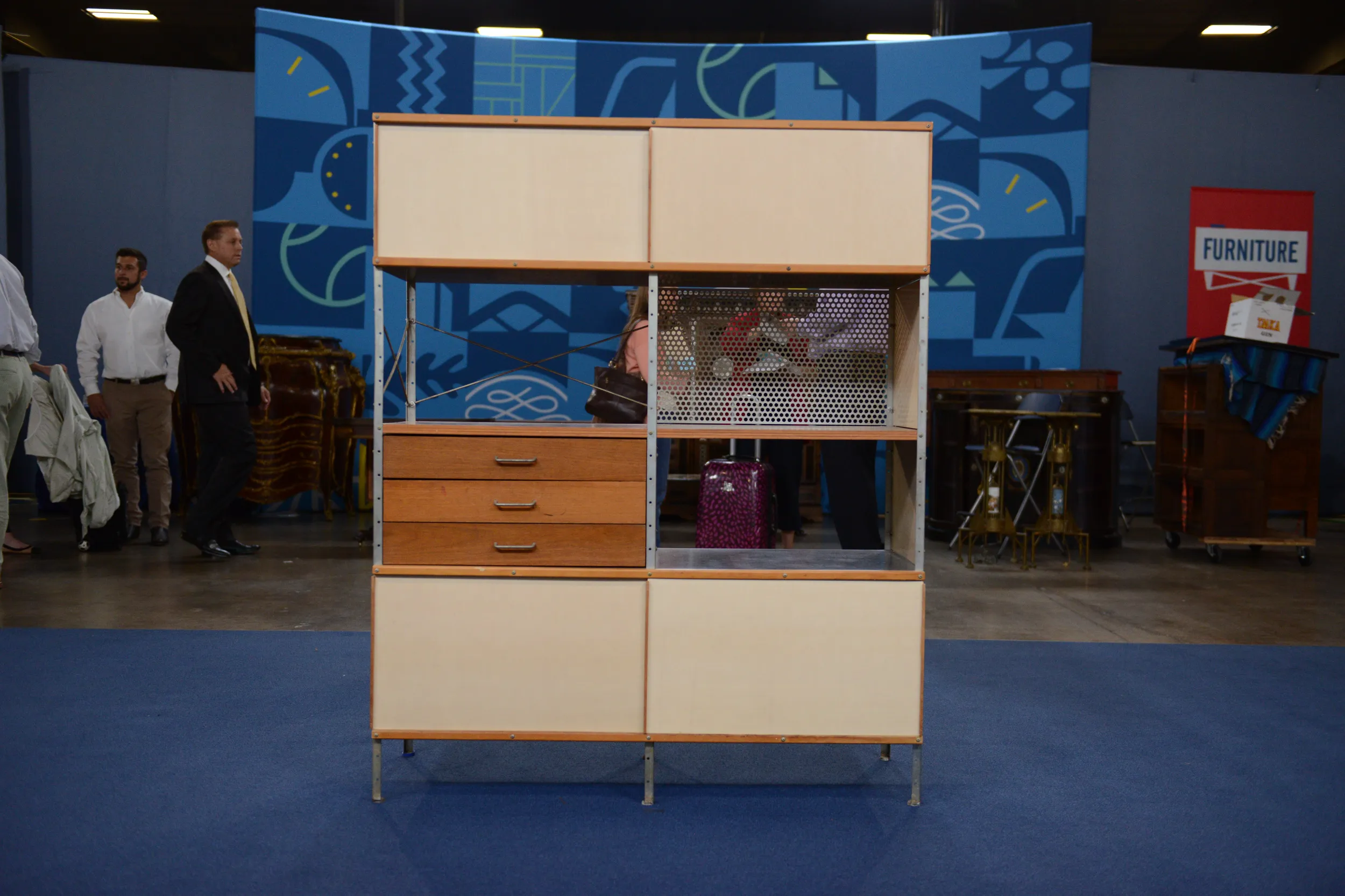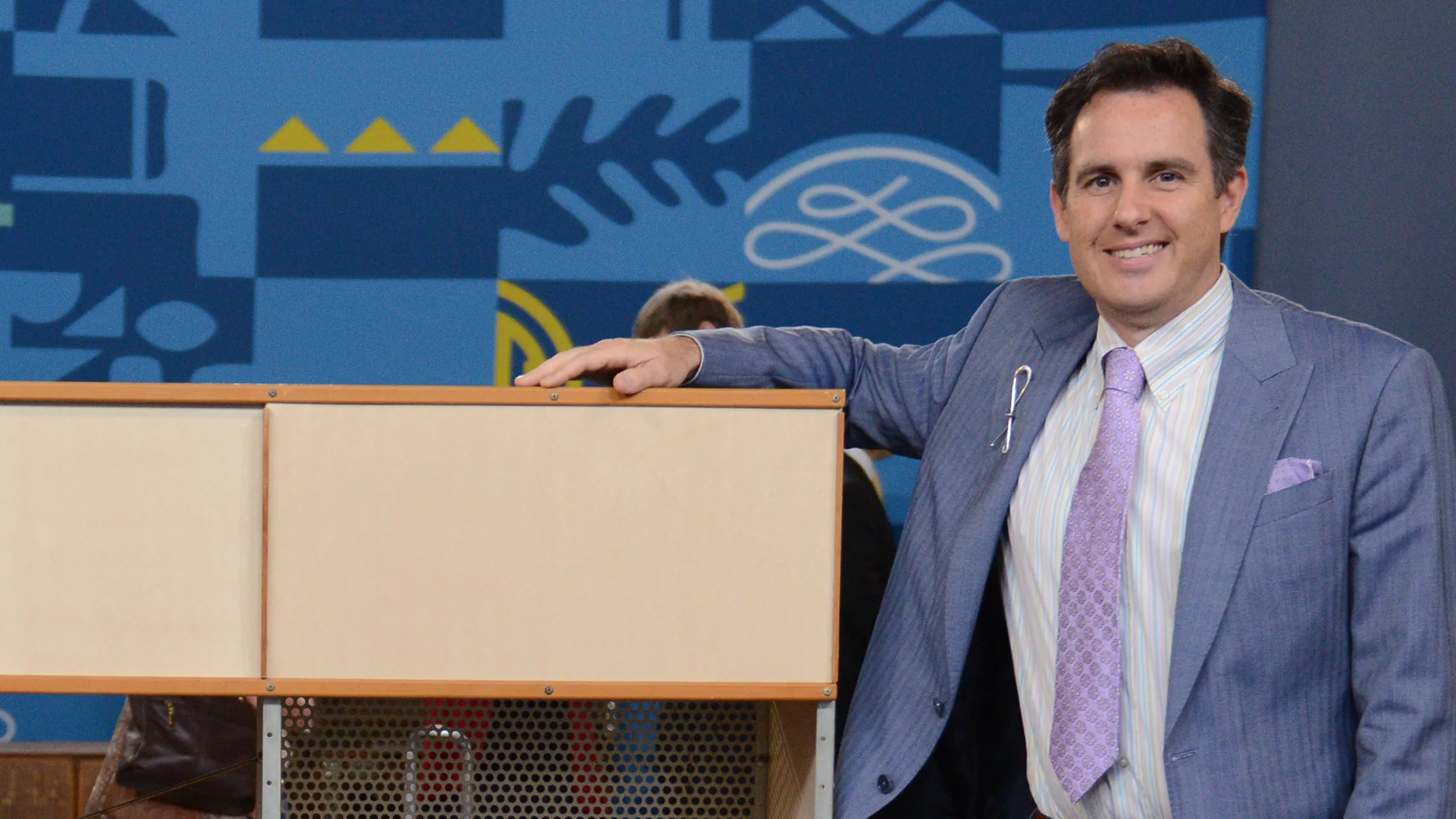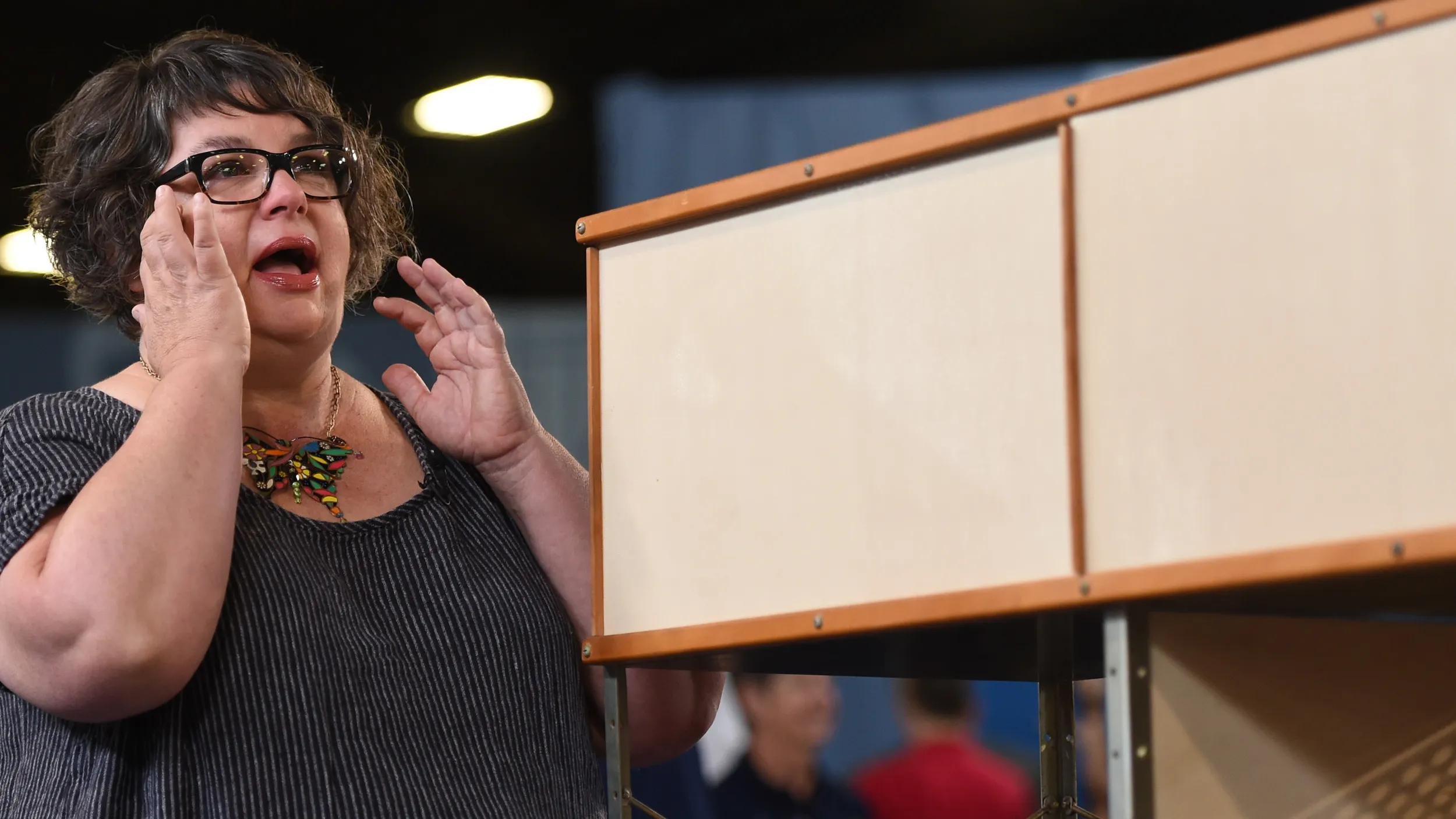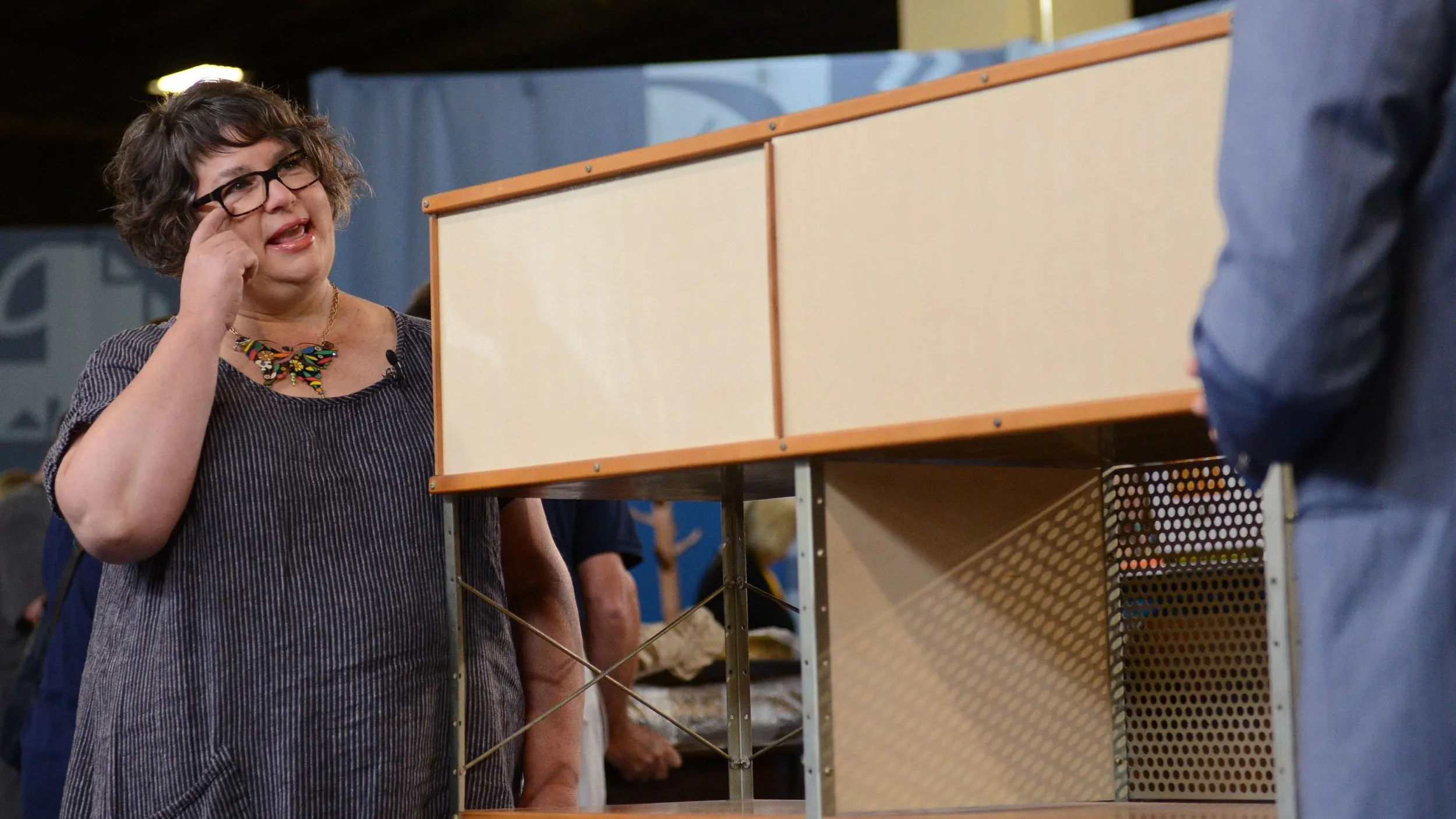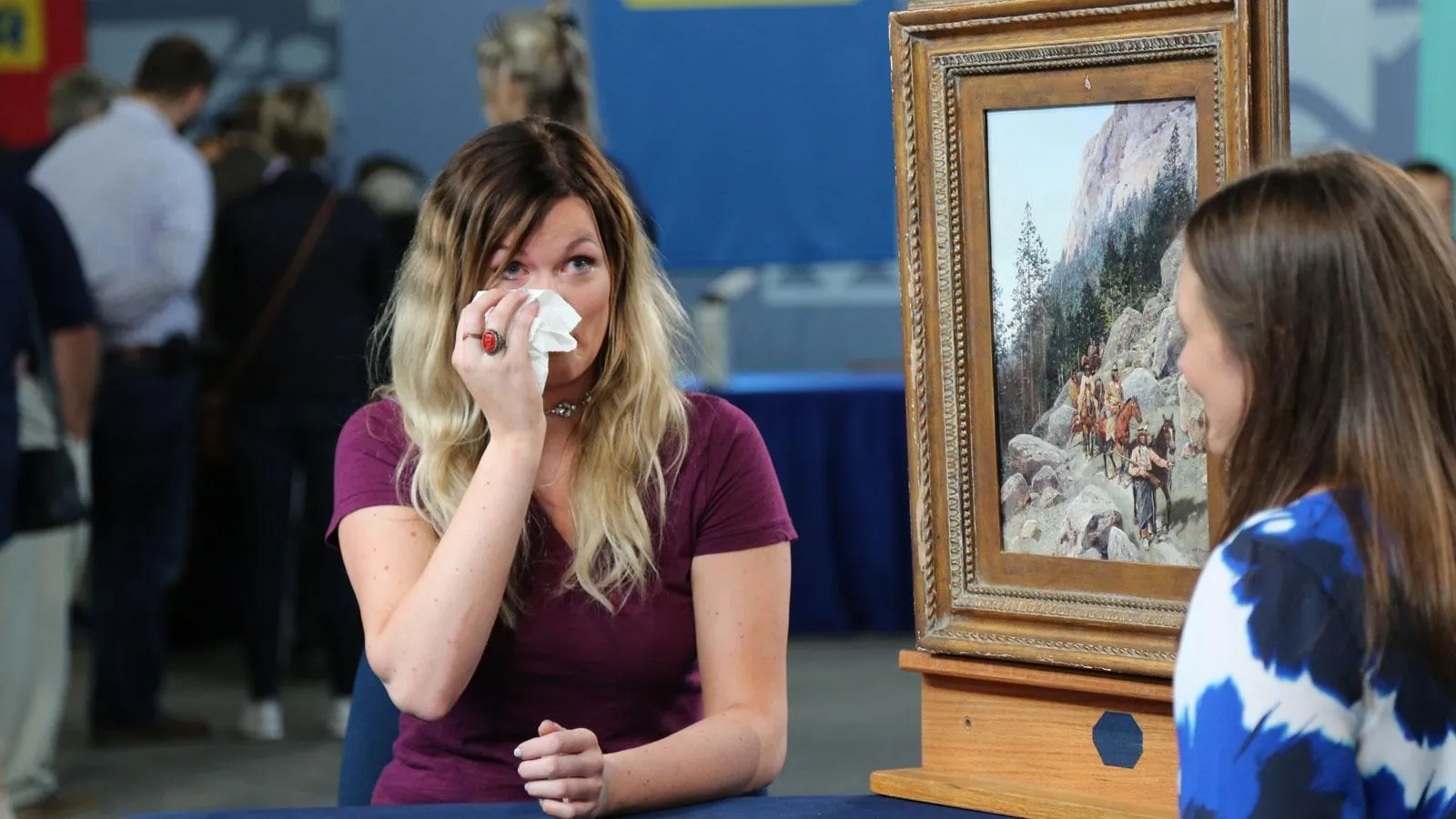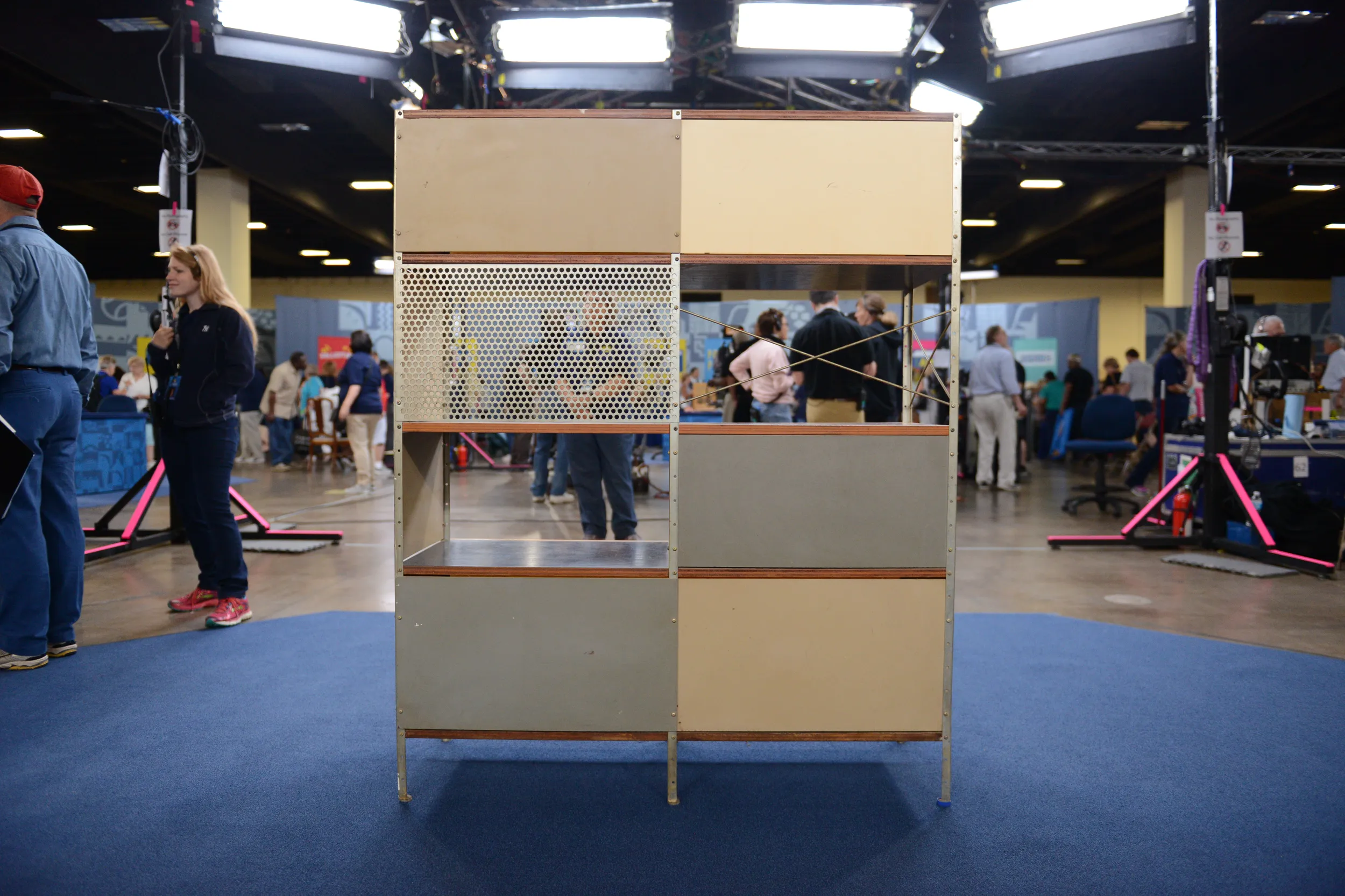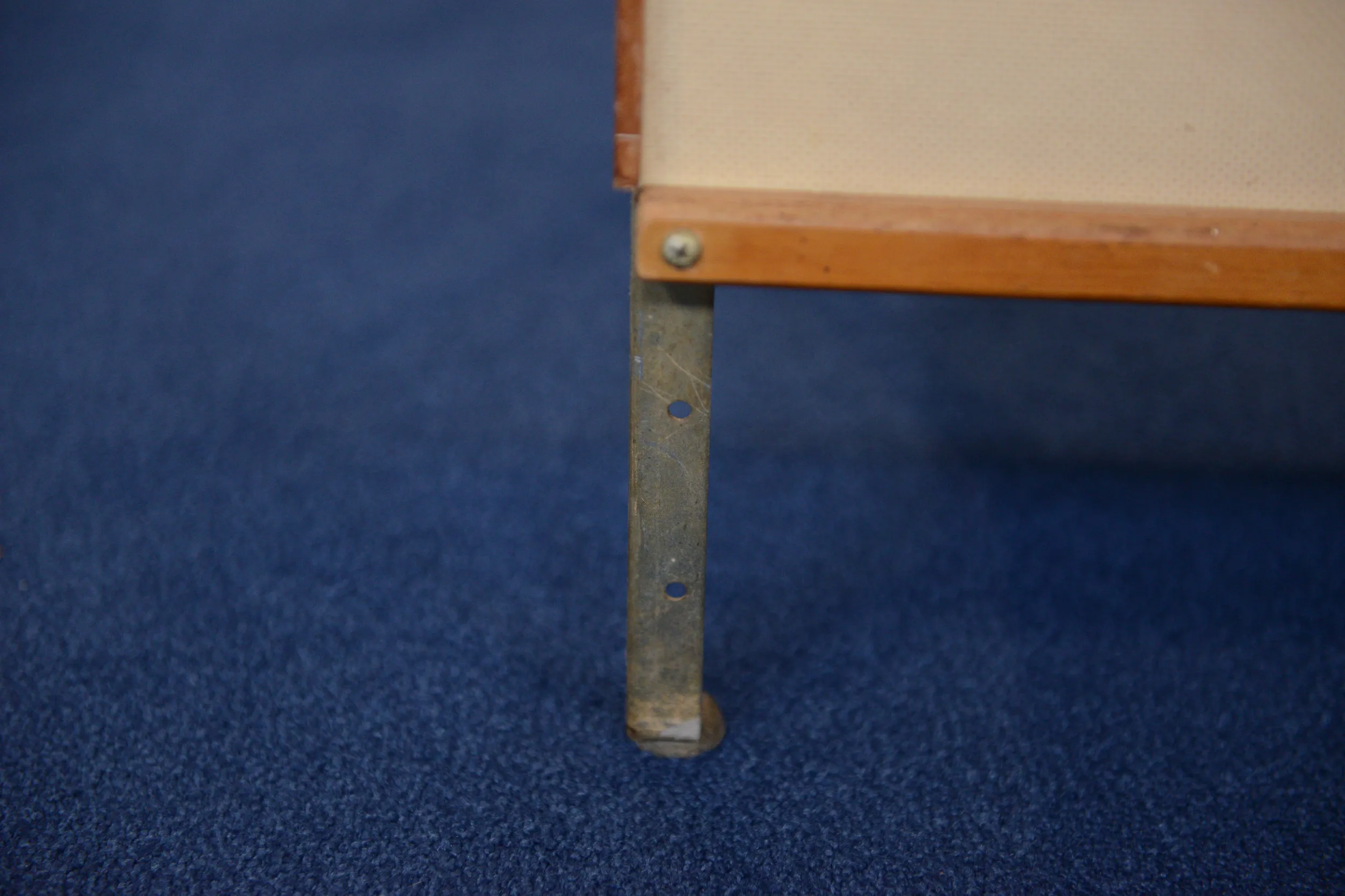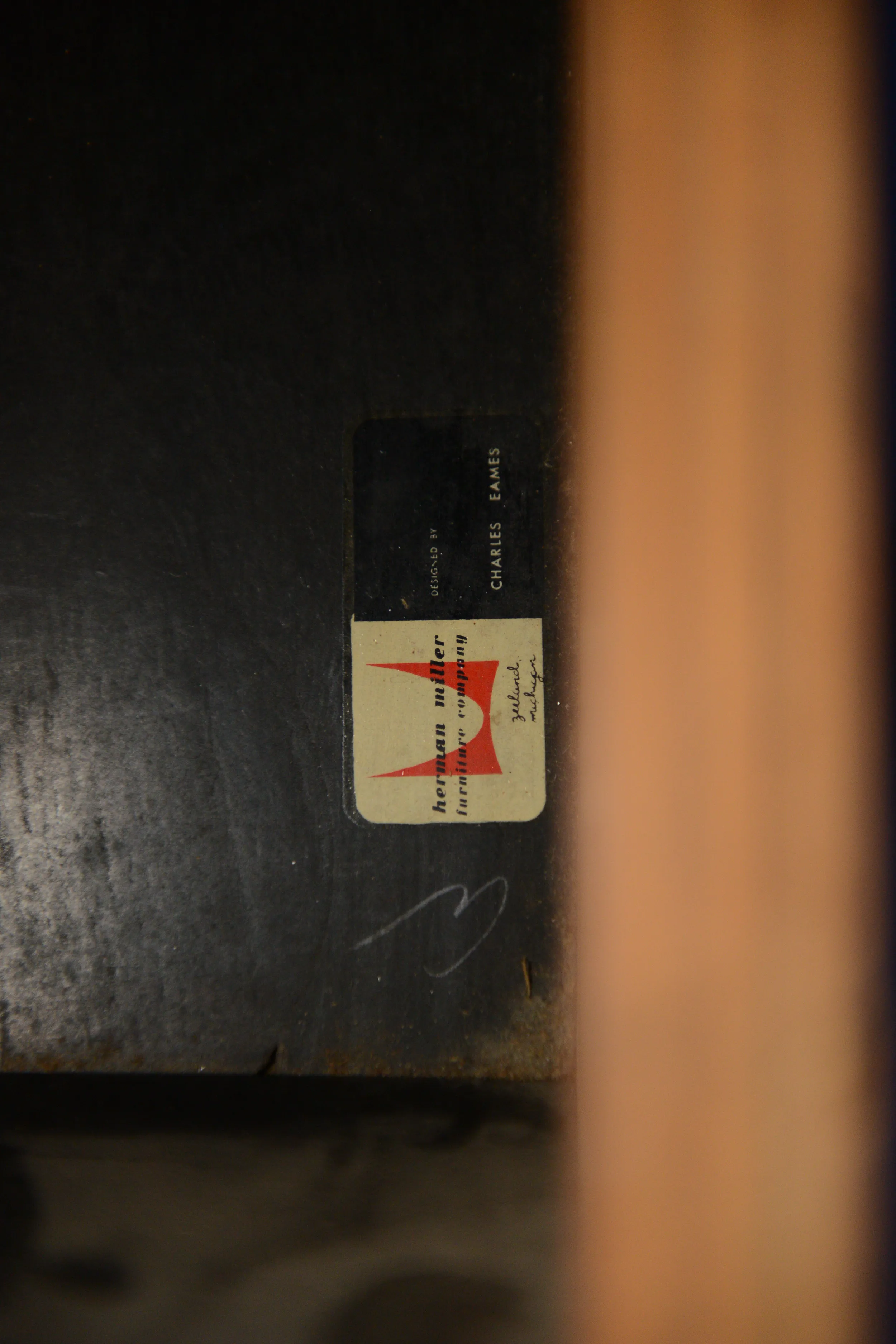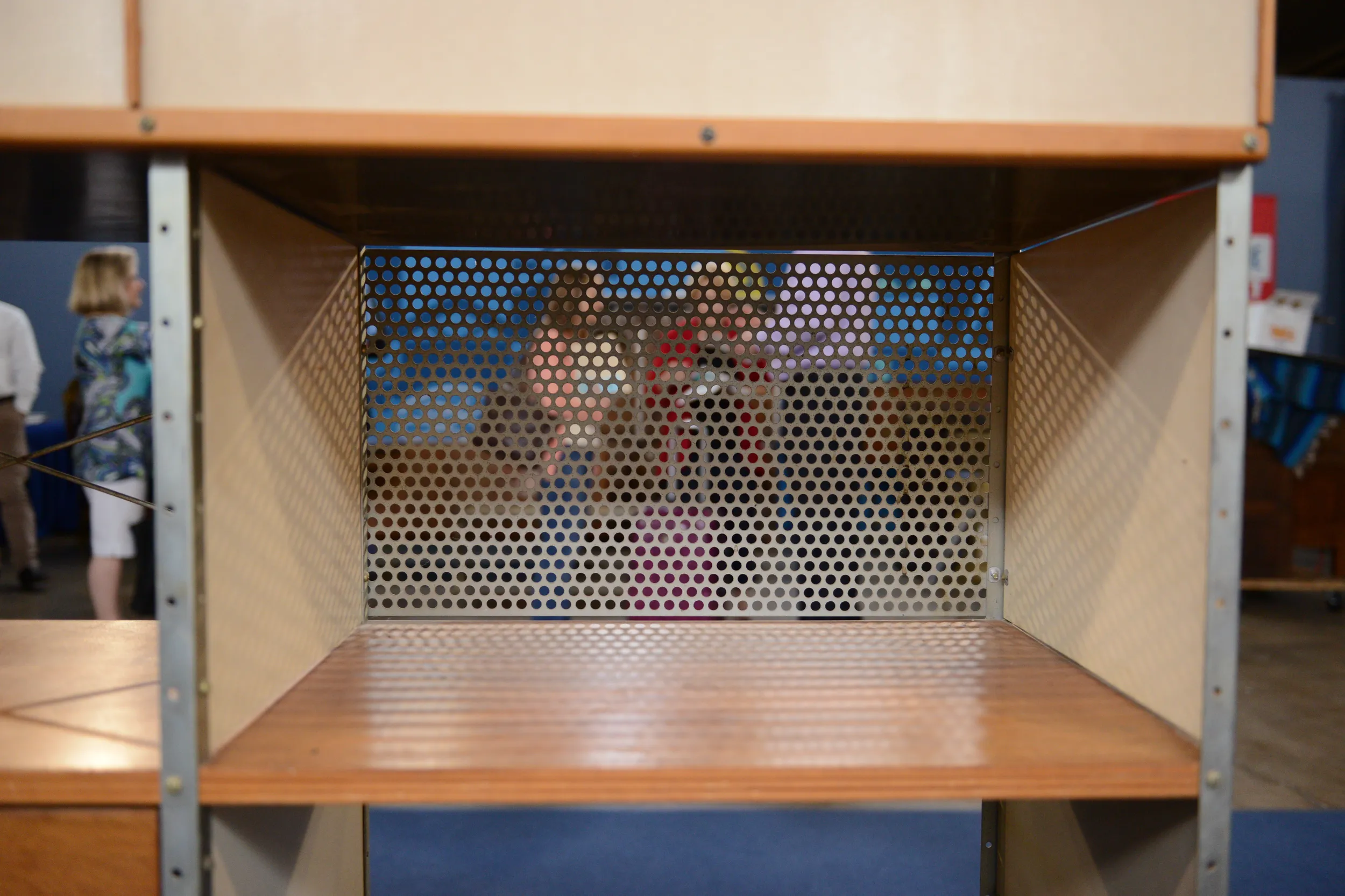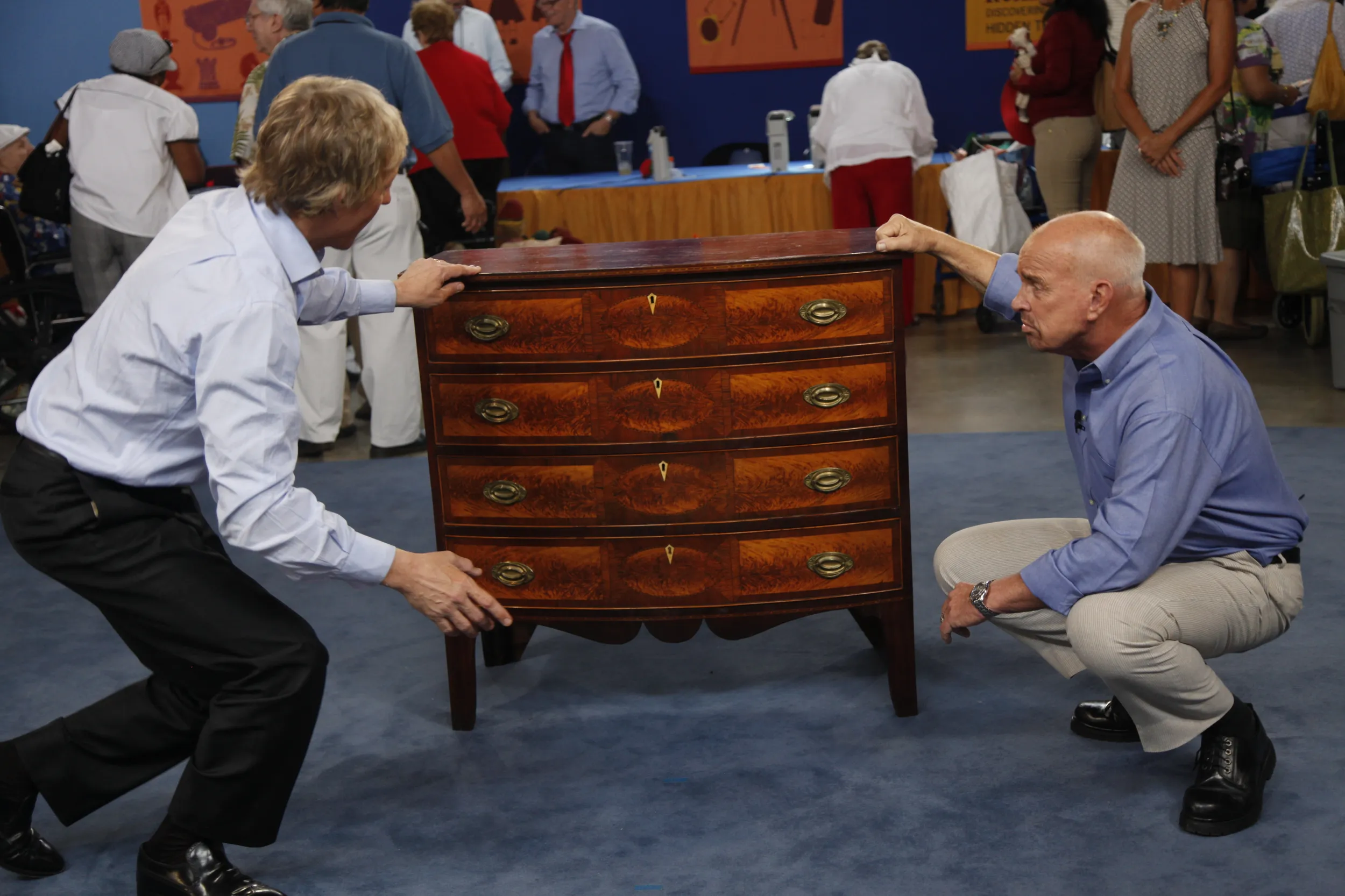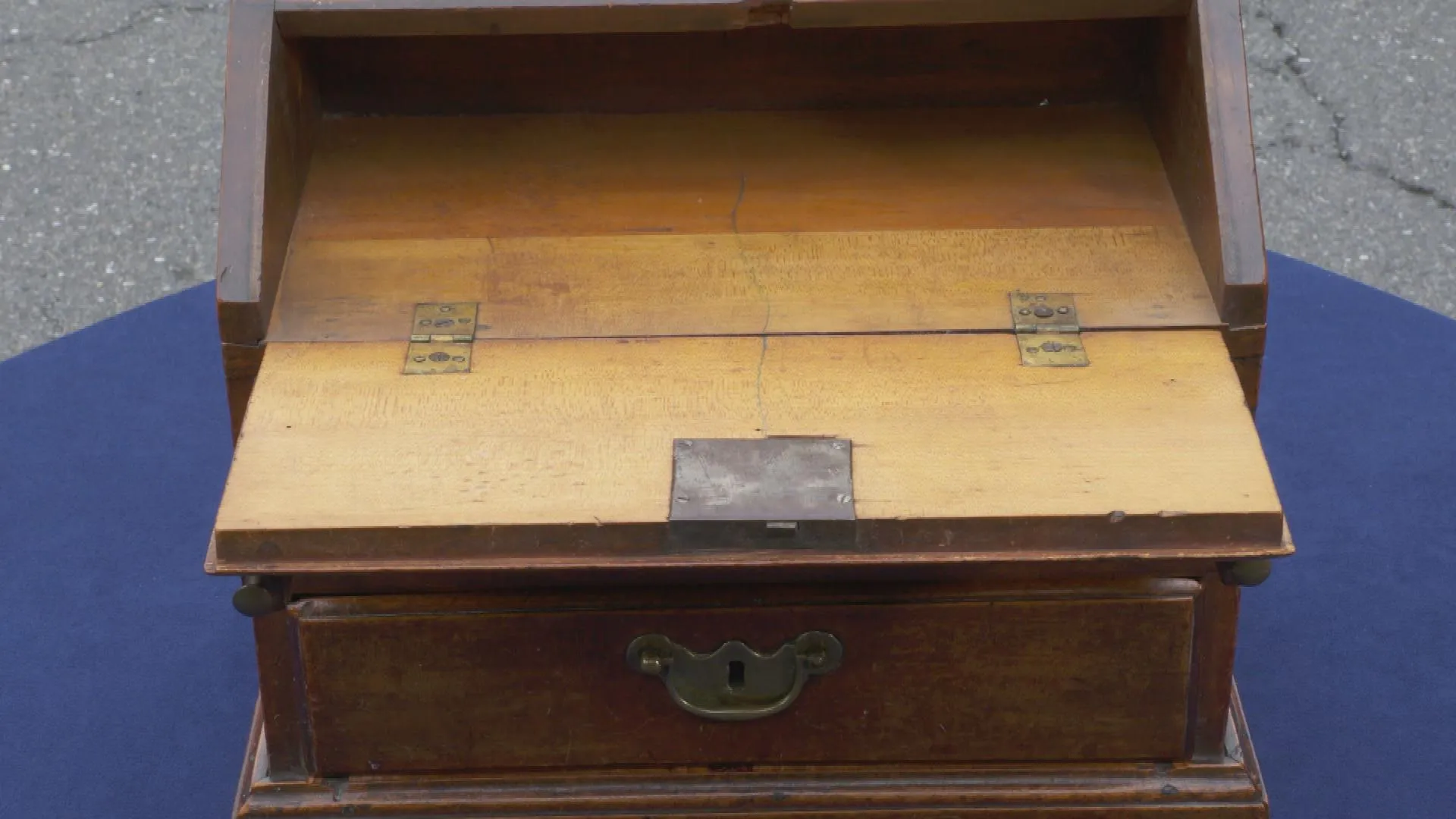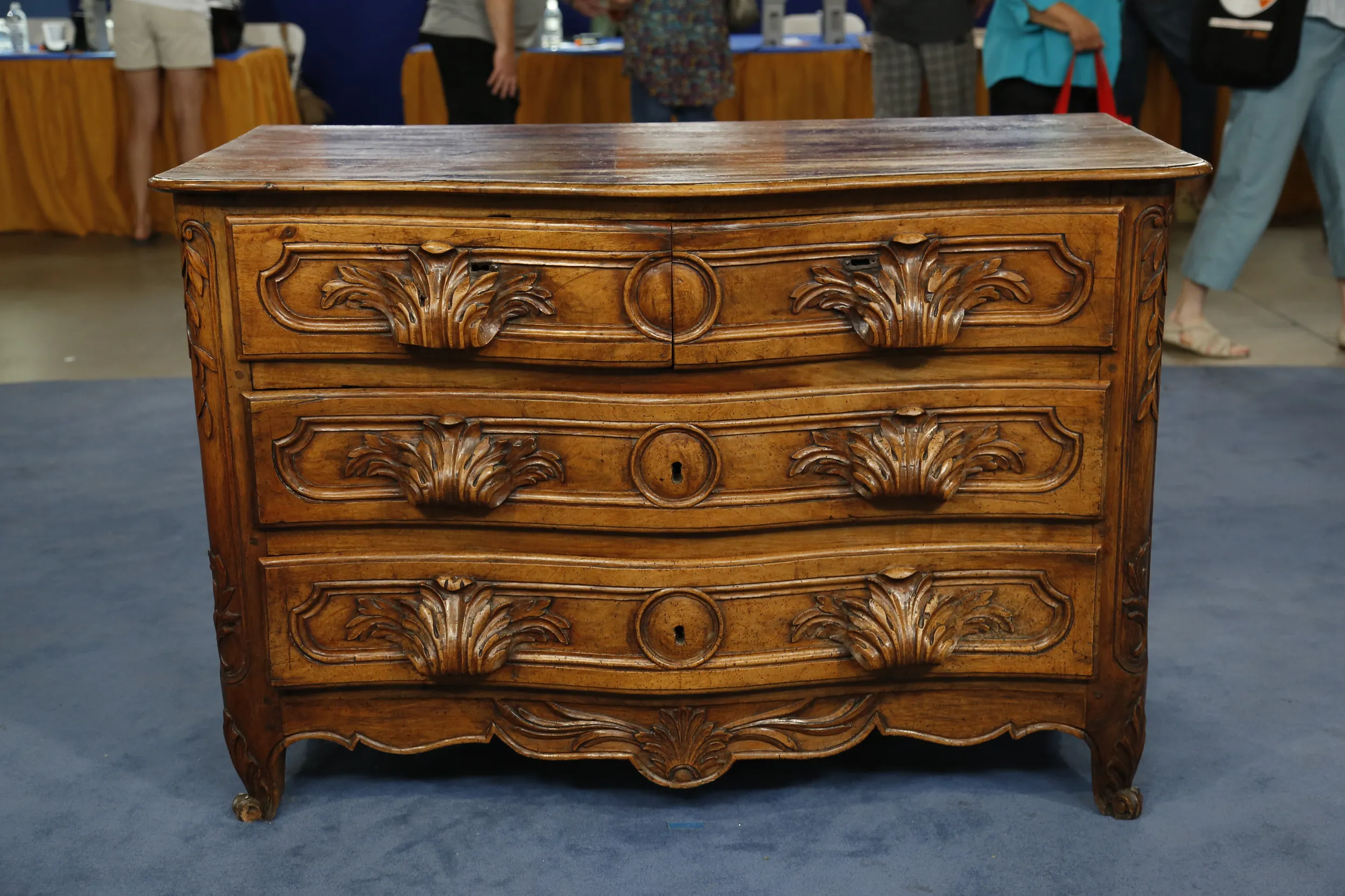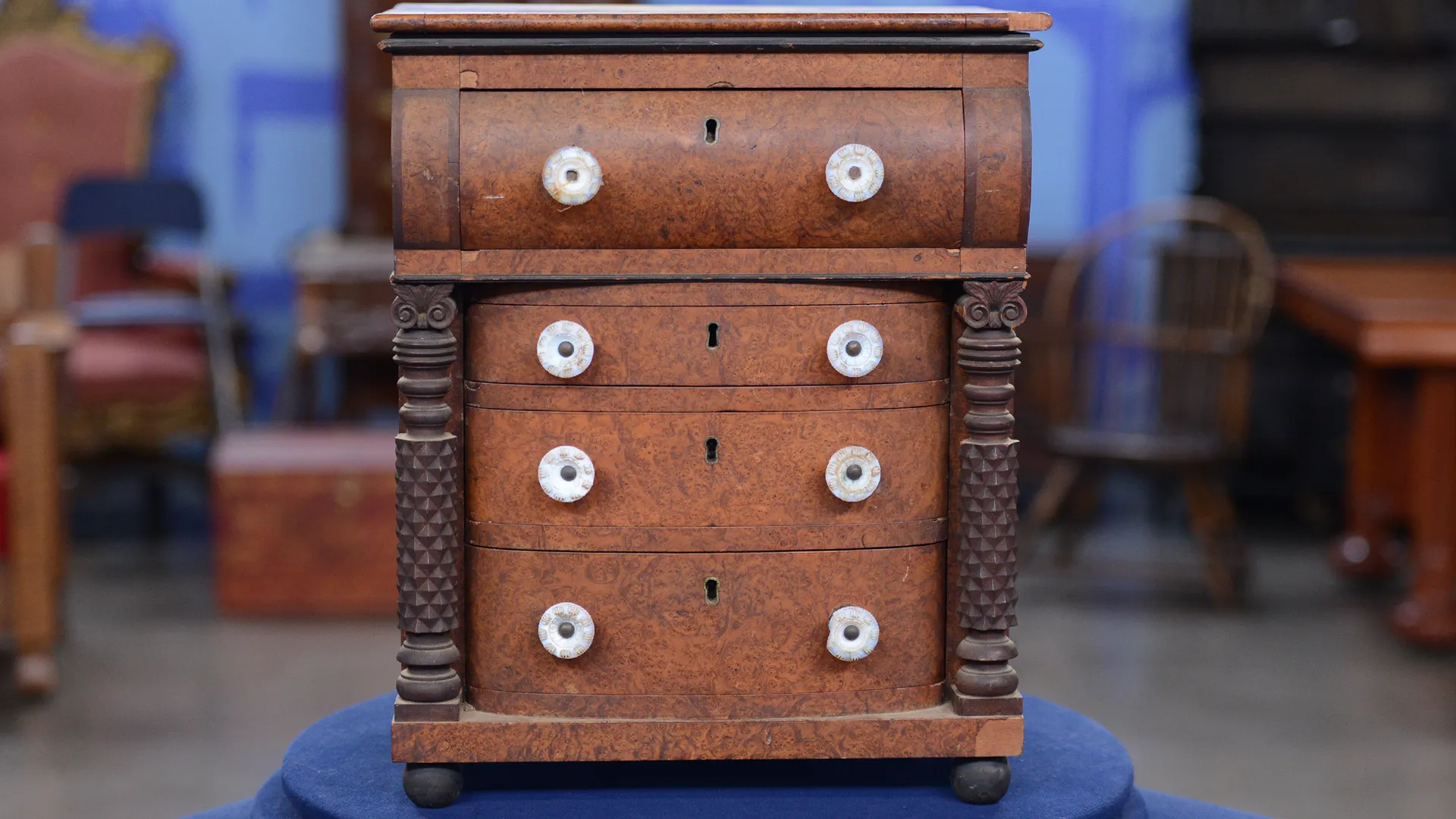GUEST: I bought this at an auction from an artist who was well known in the area. I was excited to go to the auction. Um, actually postponed a hernia surgery to attend the auction. When I went to preview the auction, I suspected it was Eames, and then, when I looked in the drawer, I knew it was. And so I sat through the whole auction and I won the bid, so...
APPRAISER: The cabinet is designed by Charles Eames for the Herman Miller Furniture Company. In the original catalogue from 1952, it was known as the E.S.U. series.
GUEST: Oh.
APPRAISER: E.S.U. standing for Eames Storage Unit. This exact model was known as the E.S.U. 420-N.
GUEST: 420...
APPRAISER: The N designation is for the neutral color palette. 400 is because of the 400 series.
GUEST: Okay.
APPRAISER: And 20 designation is for the drawers and door combination. It was designed at a time when manufacturers and designers were teaming up and the best design minds were being paired with some of the best manufacturers.
GUEST: Mm-hmm.
APPRAISER: All of these parts were custom-manufactured. There's actually 341 pieces on this cabinet.
GUEST: Wow.
APPRAISER: I counted them this morning.
GUEST: (laughs) You're crazy. (laughs)
APPRAISER: There's a lot of companies today that are very successful with producing something that comes in a flat pack and is shipped out, and the consumer actually puts it together.
GUEST: Right.
APPRAISER: This was far too complex for a consumer to assemble themselves.
GUEST: Mm-hmm.
APPRAISER: So these all had to be made in the factory at Herman Miller in Zeeland, Michigan. They all had to be assembled there, then put in a large cardboard carton and a crate, and shipped out by rail or truck in 1950, across the country to their destination.
GUEST: Right.
APPRAISER: And actually proved to be a little too expensive. And also, the design of the items suffered in transit. The biggest flaw of this design is that the legs are very thin...
GUEST: Mm-hmm.
APPRAISER: ...and are designed to take a lot of weight compressed straight down, but they're not designed for lateral movement. So in shipping, or when you pile a lot of heavy items on top of this...
GUEST: On top.
APPRAISER: ... and then you want to move it, even just an inch...
GUEST: Right.
APPRAISER: ...those legs can kind of give way. It has a label here in the drawer. That label is from the early 1950s. The reason I know this is from between 1950 and 1952 is that in 1953, this entire cabinet was redesigned.
GUEST: Oh.
APPRAISER: The weakness of the legs...
GUEST: Was fixed.
APPRAISER: Was, was fixed, and new legs were designed that were inset into the bottom. This version, which is commonly referred to as the first-series version, has these original legs. How much did you pay for it?
GUEST: Um, $15.
APPRAISER: In 1952, these were about $200.
GUEST: Mm-hmm.
APPRAISER: Which was fairly reasonable. In today's dollars, that would be about $1,700. There's few of them that survive in, in good condition.
GUEST: Mmm.
APPRAISER: I would call this one of the best survivors...
GUEST: Oh, wow.
APPRAISER: ...I have ever seen, and I specialize in this type of design.
GUEST: Wow.
APPRAISER: At auction, which is probably the most common place that these would show up today...
GUEST: Mm-hmm.
APPRAISER: ...I think this would sell for about $20,000.
GUEST: What? Really?
APPRAISER: Yes. Uh...
GUEST: (laughing) Really?
APPRAISER: Yeah.
GUEST: Wow! I was, I was going to be cool. I had no idea. I thought maybe $800. Well, I have two like this, and two small ones, and we love them. Oh, I had no idea. Wow, that's very cool. (laughs) Wow! (laughing) I had no clue.
